


Irish whiskey exports enjoyed a bounce-back in 2024, climbing 13 percent to more than $1.1 billion (€1 billion) in value, according to the Irish Whiskey Association. That recovery followed a rocky 2023, when sales dipped 14 percent, but the category is back on the up thanks to key new markets like India and Australia.
Still, not everyone is raising a glass. Irish Distillers, the Pernod-Ricard-owned producer behind Jameson and Redbreast, has hit pause on whiskey production and delayed its new $272 million (€250 million) Midleton facility, while other big players like Bushmills and Great Northern Distillery are making moves to avoid oversupply.
But for Irish whiskey drinkers, there remains much to celebrate. The past decade has brought a whirlwind of new distilleries, independent bottlers, and fresh takes on traditional production practices. Combined, this has led to more diversity on liquor store shelves, whether smooth, easygoing blends (the category’s bread and butter), full-bodied single pot still whiskey (Ireland’s homegrown gem), fruit-forward single malts, or refreshing single grain expressions.
Ready to discover the current cream of the crop? Here are 15 of the best Irish whiskeys at every price point for 2025.
Each year, VinePair undertakes numerous tastings as part of our “Buy This Booze” product roundups, showcasing the finest bottles across the most sought-after wine and spirits categories. Through this process, our tasting and editorial teams sample thousands of bottles annually. This work allows us to stay at the forefront of industry trends, ensuring we recognize not just what’s new but also what remains at the pinnacle of quality and value.
VinePair’s ultimate goal is to serve as a trusted, authoritative resource for drinkers, offering insights that apply directly to everyday purchases and enjoyment. Learn more about our tastings and reviews department here.
We conduct tastings as our readers would: with full awareness of the producer and, crucially, the price of each product. As such, our tastings are not performed blind.
For this Irish whiskey roundup, all samples were poured in Glencairn glasses and given five minutes to breathe before tasting. We analyzed each whiskey’s aromas, flavors, texture, and finish, while appearance did not factor into the equation unless there was a notable flaw or irregularity.
To compile a well-rounded selection of the best Irish whiskeys, VinePair invited producers, distributors, and PR representatives to submit bottles for consideration. These samples were provided at no cost — producers did not pay for inclusion, nor did VinePair purchase the products. All submissions were accepted with the clear understanding that participation did not guarantee inclusion in the final lineup.
For this year’s roundup, we assessed 60 new submissions and revisited over a dozen previously reviewed expressions. Each whiskey was scored on a 100-point scale based on its aroma, flavor complexity, texture, and finish. From there, we curated an editorially driven list of the 15 best Irish whiskeys to buy right now. It’s important to note that this ranking is not simply a reflection of the highest-scoring bottles. Instead, our selection balances quality, price range, and suitability for different drinking occasions — because while price is undoubtedly objective, we believe affordability is not.
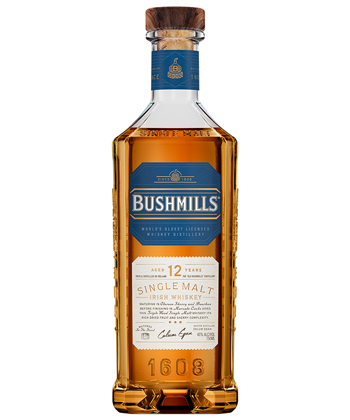
From our “best all-rounder” spirits we expect a lot: mass-market appeal to both novices and seasoned drinkers; widescale availability; affordability to the point where you can consume neat and in cocktails; and, above all, versatility.
Bushmills’ 12-year-old single malt comfortably ticks all of those boxes, and in the case of one of its attributes, surprisingly so. That one aspect that might raise an eyebrow for some is its bottling strength of 40 percent ABV, the legal minimum for the category and typically lighter than you’d expect from a spirit that’s going to work equally well in cocktails and when sipping neat.
But work well it does — and then some! — thanks to its extremely concentrated flavor profile that no doubt owes a debt to triple-cask maturation (oloroso sherry, ex-bourbon, and Marsala) as well as centuries of institutional knowledge at one of the world’s oldest distilleries.
More specifically, this single malt serves rich notes of sherry, dried fruit, and luxurious oak. Should you wish to mix it into a cocktail, the suggested retail price will run you somewhere in the realm of $2.50 per ounce, or $5 to $7.50 per cocktail, depending on your drink of choice. That will easily allow for two or three cocktails at home for the price one drink might cost you at a bar. As we were saying: great all-rounder right here!
Average price: $63
Rating: 92
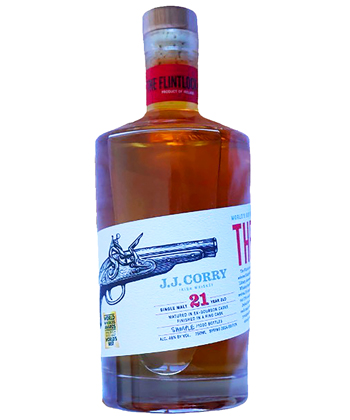
This is not the most expensive expression on this list, but with just 1,200 bottles released globally, it definitely lives up to its “seek out” status. So why should you do so?
Beyond the simple economics of supply and demand, there are some important technical considerations: This single malt was bottled at 21 years old, without chill filtration or additives, and at an assertive 46 percent ABV. Price-wise, you typically have to pay much more than the MSRP of this release for a bottle boasting those stats in the Irish whiskey realm. And more important than all of the production details, this is simply a delicious single malt.
Its main beauty lies in its tropical, floral profile — an ethereal sweet spot that only some of the world’s great whiskeys land upon during their journey from fresh youthfulness to dried, complex, and savory maturity. There’s no hint of a bitter finish or over-reliance on oak; no heavy-handed influence from fancy finishing casks or complex mash bills, either. Simply put, less is infinitely more in this exceptional single malt.
Average price: $224
Rating: 95
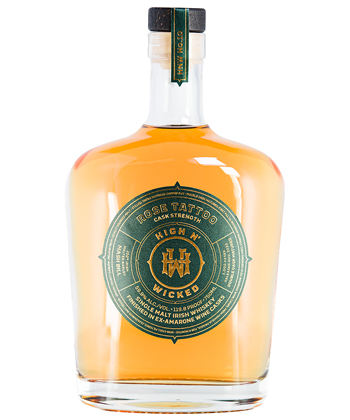
The 10th expression in High N’ Wicked’s Limited Singular Series, this non-age-statement release employs ex-Amarone casks for a finishing period of eight months as its USP. Typically, where heady red- and fortified-red-wine-finished releases are concerned, the impact can end up brash, and often clumsy.
But if you were to blind taste us on this whiskey, red wine wouldn’t crop up in our first five guesses for finishing cask, such is the attractive and approachable orchard and stone fruit profile on the nose. We’d likely be similarly stumped by the 59.9 percent ABV — its cask-strength heat barely registering during each sniff.
If the nose is all about what this whiskey is not — or what it doesn’t appear to be — the palate shifts back into place in a way that everything makes sense but simultaneously defies expectations. We’d be lying, for example, if we said we didn’t enjoy it much more with a liberal splash of water, nor that the Amarone red wine influence didn’t become much more prominent and apparent. But at this point, it’s an achievement to be celebrated, and a dram to geekily tinker with, adjusting ABV to taste and appreciating its ever richer depth of flavors and complex texture.
Average price: $146
Rating: 94
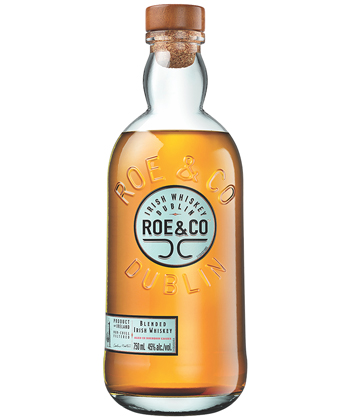
Roe & Co’s Blended Irish Whiskey is a mix of malt and grain distillates, aged exclusively in ex-bourbon casks. Where its oak-forward, sweet and rich profile lacks some of the nuance of a full-on sipping whiskey, those characteristics — along with its 45 percent ABV, make it a sturdy cocktail component, at home in a spectrum of classics.
At $30 it also delivers more than its similarly priced competitors — the liquid definition of terms like versatility, approachability, and gentle character. When making cocktails, we never want our base spirit to overpower, but neither do we want it to fade into the background. Roe & Co strikes this balance while never threatening to break the bank.
Average price: $30
Rating: 90
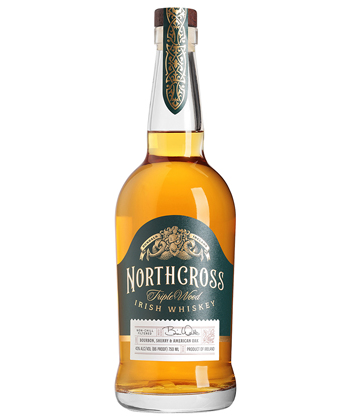
As its name suggests, this blended Irish whiskey matures in three separate types of oak: ex-bourbon, oloroso sherry, and new American oak. At $25 and with a bottling strength of 43 percent ABV, it’s also a solid option for cocktails, its oak-forward profile and assertive palate ensuring it will work in classics that call for American whiskey as well as the much slimmer range of Irish-based classics.
Average price: $25
Rating: 88
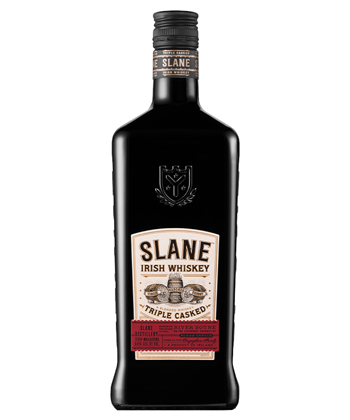
Seek out Slane Triple Casked for a widely available, reliable, weeknight sipper. With notable wood influence from sherry casks, new oak, and former Tennessee whiskey barrels, the latter impart a heady dose of banana and caramel, signature to its Brown-Forman-owned stablemate Jack Daniel’s. At 40 percent ABV, we’d hold the ice and reach for other options for cocktails; instead, this whiskey simply smells great and drinks incredibly smooth.
Average price: $28
Rating: 88
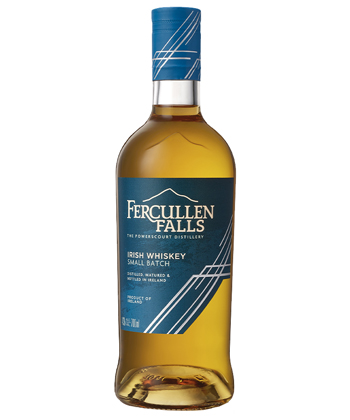
This whiskey fuses malt and grain distillates, the former matured in first-fill, ex-bourbon barrels, while the grain component rested in ex-bourbon and new charred oak casks. It’s another pick for simpler sipping occasions — an ideal companion to a nice, creamy Irish stout that continues to impress as it reveals ever more aromas of stone fruit, sweet oak, and prickly pepper heat. The palate never seeks to get too intellectual or complex, allowing a paired pint or simple food pairing to shine.
Average price: $35
Rating: 89
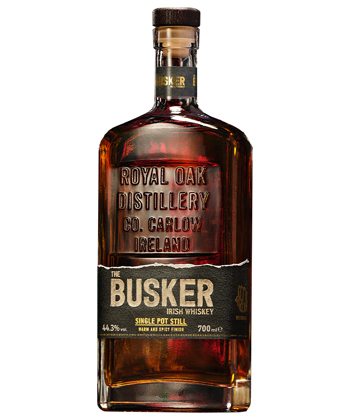
The Busker’s “Single Collection” comprises three of Ireland’s signature styles — Single Grain, Single Malt, and Single Pot Still — each bottled at a precise 44.3 percent ABV and available for $30 to $40. The most expensive of the bunch, but also the most expressive and nuanced, this single pot still release was triple distilled and aged in ex-bourbon and sherry casks. Fruity, sweet, and oaky, with just a touch of nuance, it makes for an affordable gift for the whiskey lover in your life who’s a year or two into their journey.
Average price: $40
Rating: 90
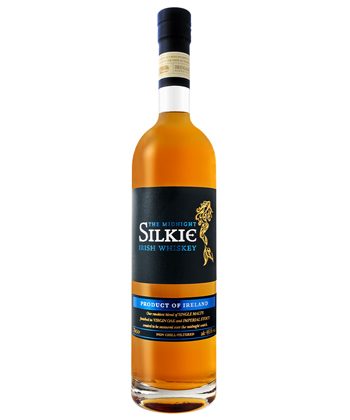
A blend of triple-distilled whiskeys, this release combines five single malts that each aged in different barrel types, the most notable of which were imperial stout and red wine casks. While only one of those five base spirits was peated, it makes up more than a third of the recipe, resulting in an attractively smoky profile that’s reminiscent of the fine malt whiskies from Islay, Scotland. Caramelized vanilla poached pears meet bonfire smoke on the nose, leading to decadent richness on the palate.
Average price: $58
Rating: 91
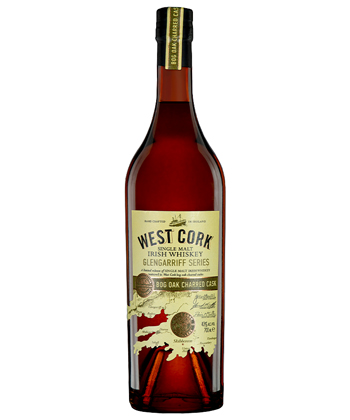
A perennial standout every time we’ve tasted through West Cork’s Glengarriff series, this single malt spends four years in sherry casks before an unspecified period in charred bog oak casks. Even for seasoned whiskey drinkers, that vessel might sound unfamiliar, typically referring to wood that was buried, preserved, and aged in peat bogs before being utilized for barrels. The ultimate influence from them is profound, with the whiskey taking on a distinctively oxidized, savory character. With fruity, sour apple notes, this is one for cider lovers and those happy to stray outside their comfort zones.
Average price: $58
Rating: 91
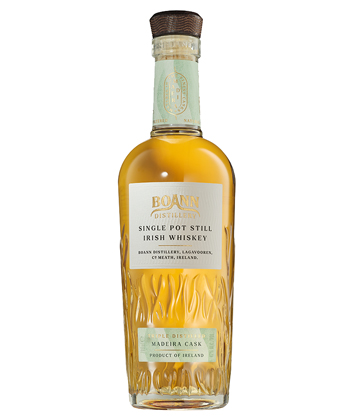
Initially aged in ex-bourbon barrels, then finished in Madeira casks, this combination leads to a notably rich and concentrated single pot still whiskey, whose profile walks an enjoyable line between savory notes and sweetness. A bottling strength of 47 percent ABV only furthers its depth and lengthy finish, which serves little sprinklings of peppery heat. Enjoy its evolution over a large single ice cube or delight in its expressive character neat from a Glencairn.
Average price: $70
Rating: 91
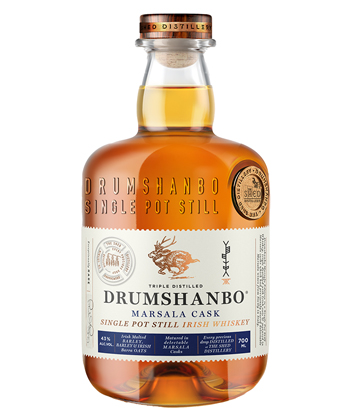
Drumshanbo is an accomplished all-rounder among Irish distillers, equally adept at producing gin, vodka, and distinctly Irish whiskeys. Distilled with malted barley, unmalted barley, and Irish barra oats, this expression spends some time in Marsala casks, though it’s not clear whether it’s entirely or just a part of its maturation journey. Either way, it builds upon the profile of the brand’s signature pot still whiskey, with added savory accents and complex oxidation notes. We’d love it even more with a little extra oomph than its 43 percent ABV, which doesn’t affect the nose or palate but does present a slight thinness on the finish.
Average price: $80
Rating: 90
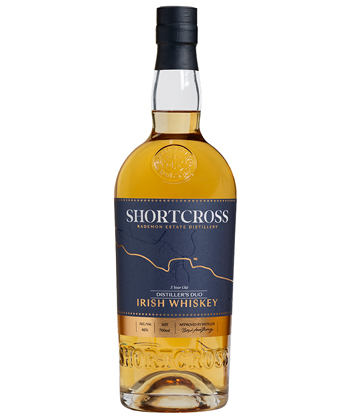
This craft, proprietary blend of single malt and single pot still distillates oozes with character. (For the curious, the latter component is fermented and distilled from 66 percent malted barley and 34 percent unmalted barley.) The overall mix showcases both styles on the nose, with a cereal- and fruit-forward profile and just the right amount of oaky sweetness. The palate dials up the concentration of everything, sipping at an approachable but not underwhelming 46 percent ABV.
Average price: $100
Rating: 92
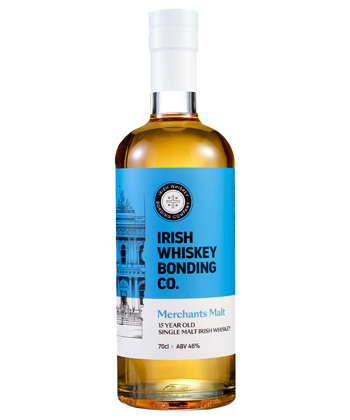
This sourced, 46-percent ABV single malt arrives at 15 years old, aged exclusively in ex-bourbon casks. It’s admittedly pricey for the age statement, but its notably light hue will quickly pique the interest of experienced whiskey drinkers, suggesting a lack of added colorants and a deft hand during maturation. While initially only vaguely fruity and perfumed on the nose, it continually evolves in glass, soon delivering tropical notes and bold (as well as unexpected) oaky sweetness on the palate. Overall, this is an intriguing and deeply rewarding dram.
Average price: $228
Rating: 93
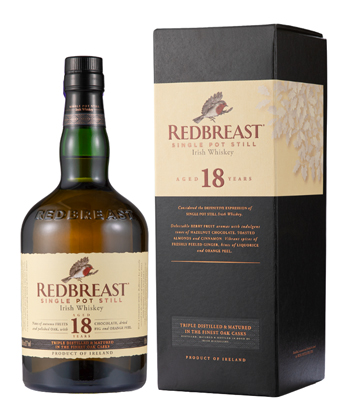
The first new permanent expression to Redbreast’s line for over four years, this 18-year-old single pot still release arrived in fall 2024, slotting in conveniently among the brand’s 12-, 15-, and 21-year expressions. Price-wise, it represents an almost $100 premium above the already impressive 15-year release, which is quite a lot for an extra three years in barrel. But profile-wise, it serves a notable evolution, fully transforming fruits that straddle fresh and dried in the 15 to decadently stewed, dried (again), and enjoyably booze-soaked. There’s additional complexity in the form of savory nuts and baking spices, while the palate oozes rich, almost oily texture, lasting well onto the finish. It might not be our favorite Redbreast expression of all time, but this is a welcome addition to the core line of one of Irish whiskey’s undisputed icons.
Average price: $250
Rating: 93
The main types of Irish whiskey include malt, grain, pot still, and blended. While the malt category includes whiskeys made from 100 percent malted barley distilled in copper pots, grain Irish whiskey is made from both malted barley and unmalted cereals, and must be distilled in column stills. Pot still whiskey must contain both malted and unmalted barley (and can also contain other unmalted grains) and must be distilled in copper pot stills. Finally, blended whiskey is made from a mixture of at least two types of Irish whiskey and can be made in both copper and column stills. There’s also a generic category simply dubbed Irish whiskey, which is a sweeping term that includes any whiskeys that don’t fit into the aforementioned categories.
Jameson is the best-selling Irish whiskey.
With its comparatively low price tag, Jameson is typically considered a “bottom-shelf” brand.
*Image retrieved from Katelyn Perry via Unsplash.com
The article The 15 Best Irish Whiskeys for 2025 appeared first on VinePair.